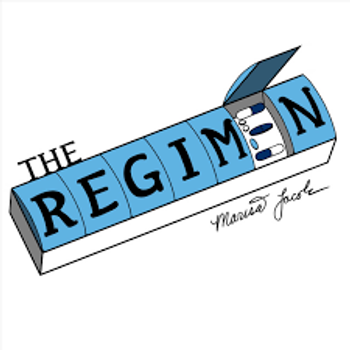
California Considering Its Own Generic Drug Label
A pharmacy group is taking a wait-and-see approach after California Governor Gavin Newsom (D) announced several drug reforms–including a state generic prescription drug label.
A pharmacy group is taking a wait-and-see approach after California Governor Gavin Newsom (D) announced several drug reforms–including a state generic prescription drug label.
If the proposed reforms are approved, California would be the first state to have its own generic drug label.
“A major cause of skyrocketing prescription drug prices is bargaining asymmetry, by which the pharmaceutical industry, often wielding monopoly power, is left unchecked, in the absence of a strong counterparty at the bargaining table…” Newsom said in the executive order.1
Establishing a single-purchaser for the highest-cost prescription drugs will yield “valuable insights into the design of a broader single-payer system, and move the State one step closer to a comprehensive solution for affordable and accessible health care for all.”1
California should also negotiate partnerships to establish the state’s own generic drug label,” Newsom’s proposed budget stated.2 “The state would contract with 1 or more generic drug manufacturers to manufacture certain generic drugs on behalf of the state and participating entities. This proposal will increase competition in the generic market, resulting in lower generic drug prices for all purchasers.”
Although the California Pharmacists Association (CPhA) applauded the Governor’s “commitment to the healthcare of all Californians and ensuring all patients can continue to have access to affordable, life-saving medications," the organization said in a press release that medications are not the only factor that should be considered.3
CPhA declined to say whether it supports a state prescription drug label.
Newsom instructed the state’s Department of Health Care Services to “take all necessary steps” to transition all pharmacy services for Medi-Cal managed care to a fee-for-service benefit by January 2021, to create significant negotiating leverage.1
In addition, the state’s Department of General Services, in consultation with the California Pharmaceutical Collaborative, “shall develop a list of prescription drugs that could appropriately be prioritized tor future bulk purchasing initiatives or reexamined tor potential renegotiation with the manufacturer,” the executive order said.1
“Prioritization shall be based on criteria that include, among other things, the price of the drug and the extent to which the drug is subject to competition, such as a sole-source drug without a generic or alternative option,” Newsom said.1 “In developing the list, the Department shall consider, among others, the 25 highest-cost prescription drugs, which collectively account for approximately half of the State's prescription drug expenditures.”
“As a starting point to address these issues, we see value in the Governor’s 2019 executive order to consolidate and bundle the contract purchasing of medications for the Medi-Cal program,” CPhA said.3
CPhA acknowledged that generic drugs had the largest median price increase of 37.6% in the state from 2017 through the first quarter of 2019, according to an Office of Statewide Health Planning and Development report.3
However, “while medications are a significant driver of rising overall healthcare costs, pinpointing the reason for those ballooning costs is one of the most complex areas in the healthcare system,” CPhA said.3 “Many factors contribute to the overall cost of medications, from the role of pharmacy benefit managers and other corporate pressures, to manufacturing process issues such as raw materials shortages, labor and supply chain challenges, etc.”
If California can manage the unknown macroeconomic factors that lead to some price increases under a California contracted manufacturing program, “then theoretically they may be able to produce a sufficient volume of product in the marketplace to begin to move prices down,” CPhA said.3
“However, there is insufficient information in the proposal at this point to fully evaluate the ways in which the State would control for those larger economic and manufacturing challenges that are impacting drug prices,” CPhA added.3
References:
- Executive Department State of California. Executive Order N-01-19. Office of Governor Gavin Newsom’s website. January 7, 2020.
https://www.gov.ca.gov/wp-content/uploads/2019/01/EO-N-01-19-Attested-01.07.19.pdf
- Gavin Newsom, Governor, State of California. Governor’s Budget Summary: 2020-21. Office of Governor Gavin Newsom’s website.
http://www.ebudget.ca.gov/2020-21/pdf/BudgetSummary/FullBudgetSummary.pdf .
- CPhA applauds Governor’s commitment to increase access to life-saving medications [news release]. California Pharmacists Association’s website. January 10, 2020.
https://cpha.com/wp-content/uploads/2020/01/CPhA-Response-to-Governors-EO-Generic-Drugs.pdf .
Newsletter
Pharmacy practice is always changing. Stay ahead of the curve with the Drug Topics newsletter and get the latest drug information, industry trends, and patient care tips.






































































































































